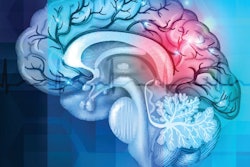
Acute stroke patients eligible for treatment with tissue plasminogen activator (tPA) have better long-term outcomes when they receive treatment via a mobile stroke ambulance with an on-board CT scanner, according to a September 8 study in the New England Journal of Medicine.
The findings offer hope for stroke patients, as early tPA treatment tends to translate into fewer complications down the road, wrote a team led by Dr. James Grotta of Memorial Hermann Hospital-Texas Medical Center in Houston.
"Mobile stroke units have the potential to increase the frequency and speed of the delivery of tPA treatment," Grotta's group noted.
Standard stroke care begins with a patient's arrival at the emergency room in an ambulance and administration of tPA if particular clinical criteria are met -- which is determined by ruling out hemorrhage on CT exam, the group noted. Since the more quickly patients receive treatment the better their long-term outcomes, mobile stroke care can really help.
"A potential way to reduce the time from stroke onset to treatment is with mobile stroke units ... which are ambulances equipped with a CT scanner, point-of-care laboratory testing, and personnel trained to diagnose and treat patients with stroke in the ambulance, including administration of tPA and triage for endovascular thrombectomy," Grotta and colleagues wrote.
The team conducted a trial called the Benefits of Stroke Treatment Delivered by a Mobile Stroke Unit Compared with Standard Management by Emergency Medical Services (BEST-MSU) that began in August 2014 and continued until August 2020. The mobile stroke ambulance included a CT scanner and was staffed by one or two paramedics, a CT technologist, and a critical care nurse; a vascular neurology specialist supervised treatment either in-person on board or through telemedicine.
Whether patients were treated by the mobile unit or by EMS depended on what service was available on weekdays between the hours of 8:00 a.m. and 8:00 p.m. (depending on the day and the site deploying a mobile unit).
On weeks a mobile unit was available, it met the EMS team on the scene, and personnel administered a head CT exam and, if appropriate, tPA treatment. On weeks when EMS was assigned, a mobile stroke unit nurse met the patient and EMS staff at the emergency department to which the patient had been taken, performed an initial assessment, and turned the patient over to the hospital's stroke treatment team, the authors explained.
Grotta and colleagues evaluated outcomes in 1,047 patients eligible for tPA treatment at 90 days post stroke using a scale of 0 to 1 (with higher scores equal to better outcomes, i.e., less disability) to compare those who received care via a mobile stroke unit and those who received care from EMS. Of the total study cohort, 617 were treated by the mobile stroke unit and 430 by EMS.
Patients who received stroke care via the mobile unit had better outcomes at 90 days post injury, Grotta's group found.
| EMS vs. mobile stroke unit for stroke outcomes | ||
| Measure | EMS | Mobile stroke unit |
| Time of stroke onset to tPA administration | 108 minutes | 72 minutes |
| Percentage of patients eligible for tPA treatment who received it | 79.5% | 97.1% |
| Outcome score at 90 days post stroke (scale of 0 to 1) | 0.66 | 0.72 |
| Mortality percentages at 90 days post stroke | 11.9% | 8.9% |
Mobile stroke unit care could make a huge difference for patients, according to Grotta and colleagues.
"In this trial, mobile stroke unit management of acute ischemic stroke in patients who were eligible to receive tPA resulted in less disability at 90 days and faster and more frequent tPA treatment than standard management by EMS," they concluded.



















